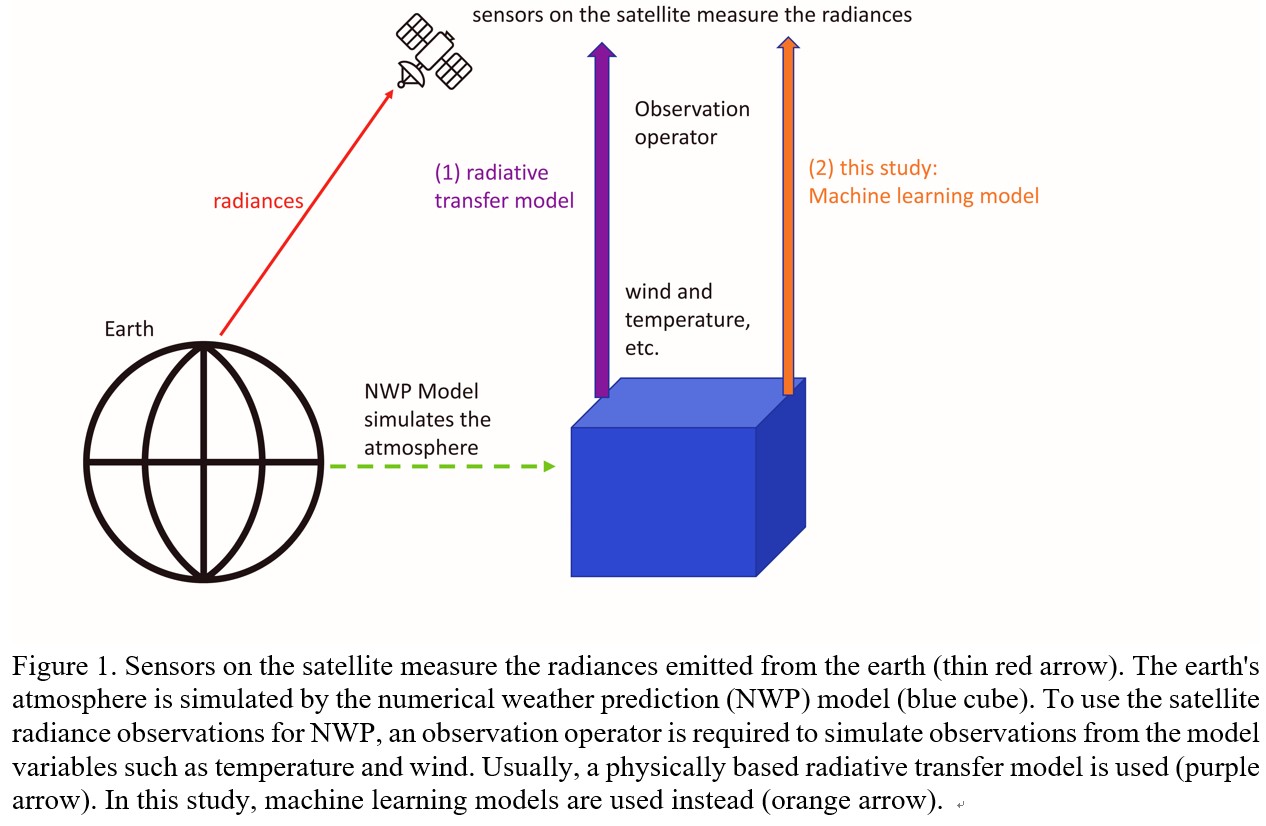JMSJ Highlights
Editor's Highlight : Liang et al. (2023)
Liang J., K. Terasaki and T. Miyoshi, 2023: A Machine Learning Approach to the Observation Operator for Satellite Radiance Data Assimilation. J. Meteor. Soc. Japan, 101,
https://doi.org/10.2151/jmsj.2023-005.
Early Online Release
Graphical Abstract
Editor in charge: Dr. Makoto Kuji
-
I highlight this paper which proposed a machine learning method as an observation operator for satellite radiances within a data assimilation system.
- Model forecast and satellite microwave radiance observations are used to train machine learning models to obtain the observation operator for satellite data assimilation.
- Data assimilation experiments using the machine learning-based observation operator show promising results without a separate bias correction procedure.
- The machine learning-based observation operator can potentially accelerate the development of using new satellite observations in numerical weather prediction.

Abstract
The observation operator (OO) is essential in data assimilation (DA) to derive the model equivalent of observations from the model variables.
In the satellite DA, the OO for satellite microwave brightness temperature (BT) is usually based on the radiative transfer model (RTM) with a bias correction procedure.
To explore the possibility to obtain OO without using physically based RTM, this study applied machine learning (ML) as OO (ML-OO) to assimilate BT from Advanced Microwave Sounding Unit-A (AMSU-A) channels 6 and 7 over oceans and channel 8 over both land and oceans under clear-sky conditions.
We used a reference system, consisting of the nonhydrostatic icosahedral atmospheric model (NICAM) and the local ensemble transform Kalman filter (LETKF).
The radiative transfer for TOVS (RTTOV) was implemented in the system as OO, combined with a separate bias correction procedure (RTTOV-OO).
The DA experiment was performed for one month to assimilate conventional observations and BT using the reference system.
Model forecasts from the experiment were paired with observations for training the ML models to obtain ML-OO. In addition, three DA experiments were conducted, which revealed that DA of the conventional observations and BT using ML-OO was slightly inferior, compared to that of RTTOV-OO, but it was better than the assimilation based on only conventional observations.
Moreover, ML-OO treated bias internally, thereby simplifying the overall system framework.
The proposed ML-OO has limitations due to (1) the inability to treat bias realistically when a significant change is present in the satellite characteristics, (2) inapplicability for many channels, (3) deteriorated performance, compared with that of RTTOV-OO in terms of accuracy and computational speed, and (4) physically based RTM is still used to train the ML-OO. Future studies can alleviate these drawbacks, thereby improving the proposed ML-OO.






